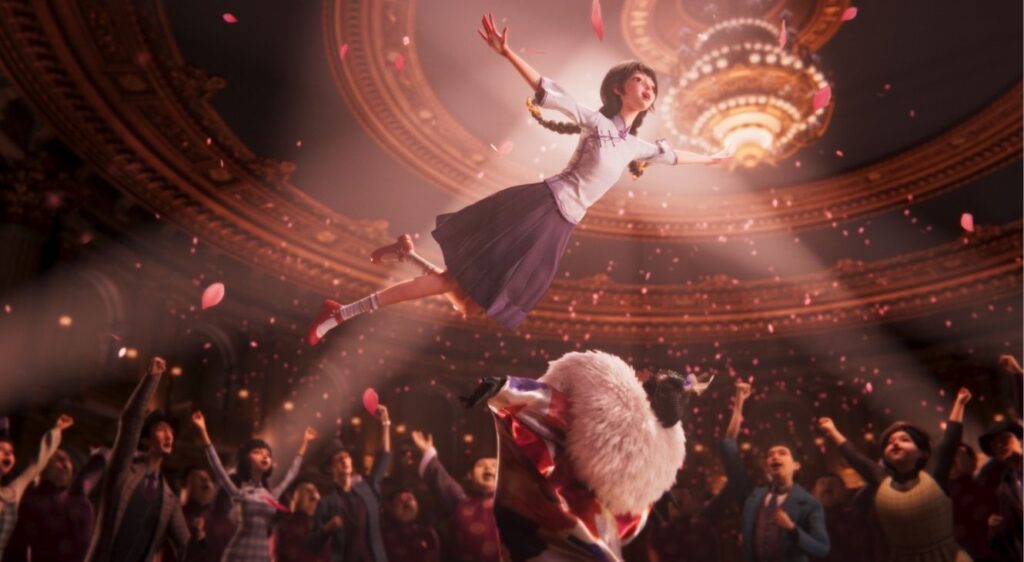A Unique Blend of Genres and Emotional Depth
Time is a precious commodity, yet in our youth, it can be easy to take for granted how finite it actually is. InThe Girl Who Stole Time, the director/screenwriter team of Yu Ao and Zhou Tienan, along with co-writer Shu Yicheng, utilizes time travel as a catalyst for not only action and adventure but also as a means to explore time in all of its complexities. While not all storytelling elements pay off (such is the double-edged sword of the time travel genre), the emotional impact is undeniable when the film reaches its climax.
The film opens with a breathtaking and exhilarating scenic mountainscape, introducing us to the magnificence of the Time Dial, as well as the assassin, Seventeen, and his compatriots, Nine and Ten. Of course, the trio loses the Time Dial in a dramatic oceanic sequence, complete with gigantic terrifying waves. From here, we jump forward to a secluded island village, where we meet the film’s heroine, the adorably hyper and youthful Qian Xiao. All she desires is to go to the big city and become an actress, but destiny has other plans for her.
A chance collision with a ship binds her to the formerly lost Time Dial. It isn’t until she arrives in the city that the adventure really kicks off. A high-energy chase scene puts her in the crosshairs of Seventeen. Both now pursued by a criminal organization bent on taking the Time Dial away from the duo, the two attempt to navigate around each other’s wants and desires. Seventeen strikes a bargain with Qian Xiao to let her keep it for a day in exchange for whatever she wants. In the process, the two soon learn that they can’t easily part and, in the process, a love story blooms.
The Fusion of Genres and Cinematic Exploration
The fusion of genres inThe Girl Who Stole Timemakes for a fun adventure before reality hits hard. With the majority of the story taking place in a day, the first half of the film has a lot going on. Yu Ao and Zhou Tienan experiment with a multitude of genres here, ranging from comedy to time travel, romance, and even a sprinkling of musical theater thrown into the mix. With so much emphasis placed on the importance of cinema in the film, the blurring of genres makes sense even more, given Qian Xiao’s love for film and her desire to become an actress. Yet, it isn’t until the film’s second half that the themes take root.
Qian Xiao, in all of her youth and spirit, doesn’t yet understand the weight or significance of time. Nor does she quite understand the gravity of permanence and loss. In her experiences with Seventeen and later on, their newfound amateur director companion, she begins to see how precious these moments are. One particular scene between her and Seventeen as they stare out into the horizon encapsulates this, with her wishing she could freeze this moment in time. It’s something to relish, yet in an instant, it passes by.
Balancing Emotion and Plot Development
In the pursuit of their adventures and escapades, the initial development of the love story could have been stronger. There is a lack of emotional balance between Qian Xiao and Seventeen, even as things between them and the criminal organization hit their zenith. In the quieter moments, Seventeen’s expressions lend themselves more to the romantic throughline that Yu Ao and Zhou Tienan are striving to achieve. In comparison, Qian Xiao’s feelings aren’t wholly believable until the emotionally devastating third act.
For all its fast pacing, it is in the quiet moments that the themes resonate most deeply. It is in the third act that the relevance of time truly resonates. The gravity of what it means to be bound to the Time Dial bears down hard, revealing the innate tragedy. Even those who control time are not immune to its passage—a reminder of how incredibly precious time is. The time travel sequences astound from beginning to end, carried by Qian Xiao’s lightning-fast feet as she embraces her inner superhero. Yet, what began as a fun skill turns into something darker—a reminder of failure and a far crueler reality.
Visuals and Emotional Impact
What is undeniable is the impeccable quality of the animation. The amount of detail work is apparent from the start, evident in the rendering and scale of the time travel elements, as well as the crystalline nature of the ice on the mountainside. The quality of the animation, particularly in each setting, stands out, as the viewer moves from mountains to a turbulent sea to 1920s Shanghai in all of its splendor. The character designs are distinct, though a bit too reminiscent of their respective archetypes. Even still, none of them are forgettable.
The memories we make throughout our lives are gifts from time. Even more so, cinema, in all of its grandness, marks its passage. It’s no wonder, then, that characters in the film gravitate toward the medium. As their lives continue to evolve and change, the one consistent tether for them is cinema and the memories it evokes. In its navigation of time and its complexities,The Girl Who Stole Timemarks a moment in cinematic history, carving out a space in the audience’s memory in the process.
With its beautiful animation and distinctive style,The Girl Who Stole Timeis sure to be unforgettable, featuring specific sequences that are likely to stand the test of time. While its implementation of time travel in the story could have been smoother (particularly once streams cross), the impact of time on all the characters is undeniable. There is no easy path to accepting time and what it brings. That much is certain. And through love, the memory of that time spent can endure all trials.



